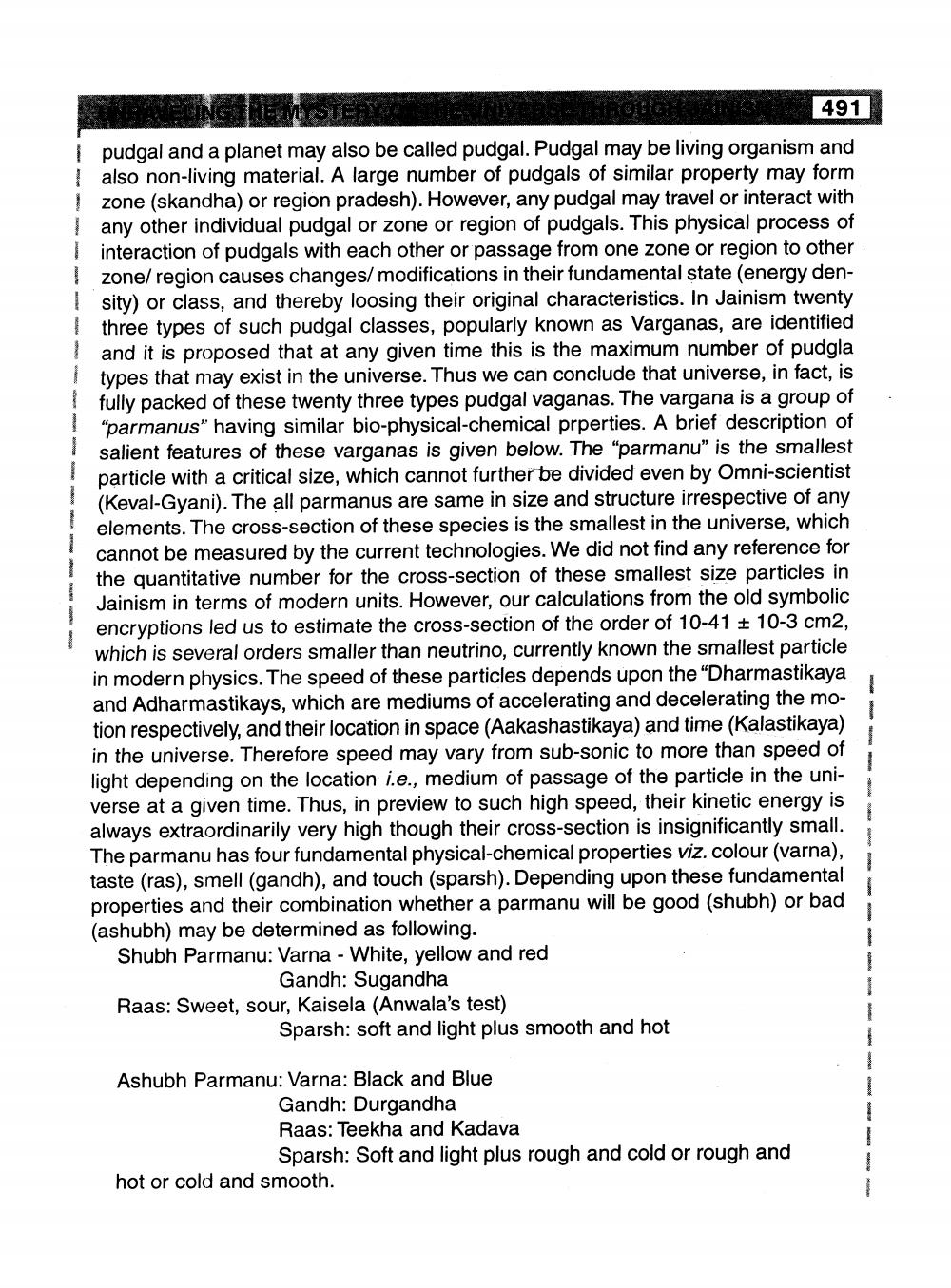________________
GTRE MYSTER
ROUGH JAINI
491 i pudgal and a planet may also be called pudgal. Pudgal may be living organism and I also non-living material. A large number of pudgals of similar property may form zone (skandha) or region pradesh). However, any pudgal may travel or interact with any other individual pudgal or zone or region of pudgals. This physical process of interaction of pudgals with each other or passage from one zone or region to other zone/region causes changes/ modifications in their fundamental state (energy density) or class, and thereby loosing their original characteristics. In Jainism twenty three types of such pudgal classes, popularly known as Varganas, are identified and it is proposed that at any given time this is the maximum number of pudgla types that may exist in the universe. Thus we can conclude that universe, in fact, is fully packed of these twenty three types pudgal vaganas. The vargana is a group of "parmanus" having similar bio-physical-chemical prperties. A brief description of salient features of these varganas is given below. The "parmanu" is the smallest particle with a critical size, which cannot further be divided even by Omni-scientist (Keval-Gyani). The all parmanus are same in size and structure irrespective of any elements. The cross-section of these species is the smallest in the universe, which cannot be measured by the current technologies. We did not find any reference for the quantitative number for the cross-section of these smallest size particles in Jainism in terms of modern units. However, our calculations from the old symbolic encryptions led us to estimate the cross-section of the order of 10-41 ± 10-3 cm2, which is several orders smaller than neutrino, currently known the smallest particle in modern physics. The speed of these particles depends upon the "Dharmastikaya and Adharmastikays, which are mediums of accelerating and decelerating the motion respectively, and their location in space (Aakashastikaya) and time (Kalastikaya) in the universe. Therefore speed may vary from sub-sonic to more than speed of light depending on the location i.e., medium of passage of the particle in the universe at a given time. Thus, in preview to such high speed, their kinetic energy is always extraordinarily very high though their cross-section is insignificantly small. The parmanu has four fundamental physical-chemical properties viz. colour (varna), taste (ras), smell (gandh), and touch (sparsh). Depending upon these fundamental properties and their combination whether a parmanu will be good (shubh) or bad (ashubh) may be determined as following.
Shubh Parmanu: Varna White, yellow and red
Gandh: Sugandha
-
Raas: Sweet, sour, Kaisela (Anwala's test)
Sparsh: soft and light plus smooth and hot
Ashubh Parmanu: Varna: Black and Blue Gandh: Durgandha
Raas: Teekha and Kadava
Sparsh: Soft and light plus rough and cold or rough and hot or cold and smooth.
I




